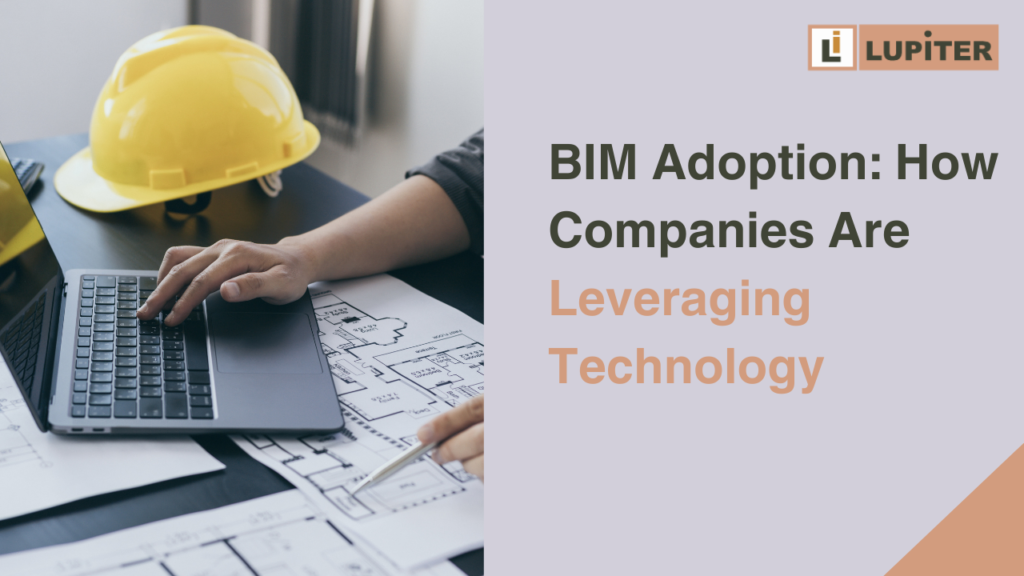
Building Information Modeling (BIM) has revolutionized the Architecture, Engineering, and Construction (AEC) industry over the past few decades. By enabling a digital representation of physical and functional characteristics of buildings and infrastructure, BIM has fostered collaboration, efficiency, and accuracy in project design and execution. However, as the AEC industry continues to evolve, so does the role of BIM. In this article, we will explore the future of BIM in the AEC industry and highlight key trends that are set to shape its development.
Integration with Artificial Intelligence and Machine Learning
One of the most exciting trends in the future of BIM is its integration with Artificial Intelligence (AI) and Machine Learning (ML). These technologies have the potential to vastly improve the capabilities of BIM by automating tasks, optimizing design processes, and predicting outcomes. For instance, AI can analyze historical data to predict potential design flaws or construction issues before they arise, thus reducing the likelihood of costly mistakes.
Machine Learning algorithms can be used to analyze vast amounts of data generated during the construction process, providing insights that can help in decision-making. This integration can lead to more intelligent and responsive BIM systems, capable of learning from past projects and improving future designs.
Enhanced Collaboration through Cloud-Based BIM
The rise of cloud computing has already begun to influence BIM, but its impact is expected to grow significantly in the coming years. Cloud-based BIM platforms facilitate real-time collaboration among stakeholders, regardless of their geographical location. This trend is particularly important as the AEC industry becomes more globalized, with projects often involving teams from different parts of the world.
With cloud-based BIM, all project data is stored in a centralized location, accessible to all authorized users. This not only improves collaboration but also ensures that everyone is working from the most up-to-date information, reducing errors and miscommunication. As cloud technology continues to advance, we can expect BIM platforms to become even more integrated, with seamless data sharing and enhanced collaboration capabilities.

The Growth of BIM for Facility Management
Traditionally, BIM has been used primarily during the design and construction phases of a project. However, there is a growing recognition of its value in facility management. As buildings and infrastructure become more complex, the need for efficient facility management has never been greater. BIM can provide detailed information about a building’s components and systems, making it easier to manage and maintain them throughout their lifecycle.
The future of BIM in facility management will likely involve more sophisticated tools and applications that allow for predictive maintenance, energy management, and space optimization. By integrating BIM with the Internet of Things (IoT), facility managers can monitor building performance in real time, enabling proactive maintenance and reducing operational costs.
Integration with Augmented Reality (AR) and Virtual Reality (VR)
Augmented Reality (AR) and Virtual Reality (VR) are poised to play a significant role in the future of BIM. These technologies can bring BIM models to life, allowing stakeholders to visualize and interact with them in a more immersive way. For example, AR can overlay BIM data onto a physical site, helping construction workers understand the design intent and make better-informed decisions on the spot.
VR, on the other hand, can be used to create virtual walkthroughs of a project before construction even begins. This can be invaluable in identifying potential issues, improving design accuracy, and enhancing client presentations. As AR and VR technology continues to improve, we can expect these tools to become more widely used in the AEC industry, further enhancing the capabilities of BIM.
BIM and the Internet of Things (IoT)
The Internet of Things (IoT) refers to the network of interconnected devices that communicate and exchange data with each other. In the context of BIM, IoT can provide real-time data about a building’s performance, enabling more informed decision-making. For example, sensors embedded in a building’s structure can monitor things like temperature, humidity, and occupancy levels, feeding this data back into the BIM model.
This data can be used to optimize building performance, reduce energy consumption, and improve occupant comfort. In the future, we can expect BIM and IoT to become even more intertwined, with BIM models serving as the central hub for all building data, providing a comprehensive view of a building’s performance throughout its lifecycle.
The Shift Towards OpenBIM
As BIM becomes more widely adopted, there is a growing demand for greater interoperability between different BIM software platforms. This has led to the development of OpenBIM, a universal approach to collaborative design and construction that is not limited by proprietary software formats. OpenBIM promotes the use of open standards, such as Industry Foundation Classes (IFC), which allow different BIM tools to communicate with each other seamlessly.
The shift towards OpenBIM is crucial for ensuring that BIM can be used effectively across all stages of a project’s lifecycle, from design to construction to facility management. As more organizations embrace OpenBIM, we can expect to see a more integrated and collaborative approach to building design and construction.
Advanced Prefabrication and Modular Construction
Prefabrication and modular construction are becoming increasingly popular in the AEC industry due to their potential to reduce construction time and costs. BIM plays a crucial role in these processes by providing detailed models that can be used to design and manufacture building components off-site.
In the future, we can expect BIM to become even more integral to prefabrication and modular construction. Advanced BIM models will be used to create highly detailed and accurate components that can be easily assembled on-site, reducing waste and improving efficiency. Additionally, BIM’s ability to simulate construction sequences will be invaluable in planning and optimizing these processes.
Sustainable Design and BIM
Sustainability is a key concern in the AEC industry, and BIM is increasingly being used to support sustainable design practices. By providing detailed information about a building’s materials, energy usage, and environmental impact, BIM can help architects and engineers design more sustainable buildings.
In the future, we can expect BIM to play an even greater role in sustainable design. This will likely involve the integration of advanced simulation tools that can model a building’s energy performance, carbon footprint, and other sustainability metrics. These tools will allow designers to optimize their designs for sustainability from the outset, rather than making changes later in the process.
The Rise of 4D, 5D, and 6D BIM
While traditional BIM focuses on 3D models, there is a growing trend towards 4D, 5D, and 6D BIM. These terms refer to the integration of additional data dimensions into BIM models: time (4D), cost (5D), and sustainability (6D).
Looking for 3D models, clash coordination and shop drawings for your Design and Construction project. Contact us with your requirements.
4D BIM allows for the simulation of construction sequences, helping project managers plan and schedule tasks more effectively. 5D BIM integrates cost data, enabling more accurate budgeting and cost management throughout a project’s lifecycle. 6D BIM focuses on sustainability, incorporating data on energy use, material choices, and environmental impact.
As the AEC industry continues to embrace these advanced BIM dimensions, we can expect to see more comprehensive and data-rich BIM models that provide a deeper understanding of a project’s complexities.
Government Mandates and BIM Standards
As the benefits of BIM become more widely recognized, many governments around the world are beginning to mandate its use for public construction projects. These mandates are often accompanied by the development of national BIM standards, which provide guidelines for the implementation and use of BIM.
In the future, we can expect more countries to adopt BIM mandates and standards, driving further adoption of BIM across the AEC industry. This will likely lead to a more standardized approach to BIM, making it easier for organizations to implement and use BIM effectively.
BIM in Infrastructure Projects
While BIM has traditionally been associated with building projects, there is a growing interest in using BIM for infrastructure projects, such as roads, bridges, and railways. Infrastructure BIM (iBIM) can provide detailed models of infrastructure assets, helping engineers and planners design, build, and maintain these assets more effectively.
In the future, we can expect iBIM to become more widely adopted as governments and private organizations recognize the benefits of using BIM for infrastructure projects. This will likely involve the development of new tools and standards specifically tailored to the needs of infrastructure projects.
The Role of Big Data in BIM
The AEC industry generates vast amounts of data throughout the lifecycle of a project, from initial design to construction to facility management. Big Data analytics can be used to process and analyze this data, providing insights that can improve project outcomes.
In the future, we can expect Big Data to play an increasingly important role in BIM. By integrating Big Data analytics with BIM, organizations will be able to make more informed decisions, optimize processes, and improve project outcomes. This will likely involve the development of new tools and platforms that can handle the large volumes of data generated by BIM.
Education and Training in BIM
As BIM becomes more complex and widespread, there is a growing need for education and training in BIM. This includes not only training for architects, engineers, and construction professionals but also for students entering the AEC industry.
Looking for BIM training and implementation for your Design and Construction team. Contact us with your requirements.
In the future, we can expect to see more educational programs and certifications focused on BIM, as well as increased emphasis on BIM training in AEC curriculums. This will ensure that the next generation of AEC professionals is well-equipped to use BIM effectively and take advantage of its full potential.
BIM and Robotics in Construction
Robotics is another technology that is set to have a significant impact on the future of BIM. Robots can be used in construction to perform tasks such as bricklaying, concrete pouring, and site surveying with greater precision and efficiency than human workers.
BIM can play a crucial role in guiding these robotic systems, providing them with the detailed models and instructions they need to perform their tasks. As robotics technology continues to advance, we can expect to see more integration between BIM and robotics, leading to more automated and efficient construction processes.
The Future of BIM: Challenges and Opportunities
While the future of BIM is full of exciting possibilities, it also presents some challenges. These include the need for greater interoperability between BIM software platforms, the need for more standardized BIM practices, and the need for better education and training in BIM.
However, these challenges also present opportunities for innovation and growth. As the AEC industry continues to embrace BIM, we can expect to see new tools, technologies, and practices that will further enhance the capabilities of BIM and drive the industry forward.
Conclusion
The future of BIM in the AEC industry is bright, with numerous trends set to shape its development in the coming years. From the integration of AI and IoT to the rise of cloud-based collaboration and the growth of sustainable design practices, BIM is poised to become an even more integral part of the AEC industry. By staying informed about these trends and adapting to the changing landscape, organizations can ensure that they remain competitive and continue to deliver high-quality projects that meet the needs of their clients and stakeholders.


